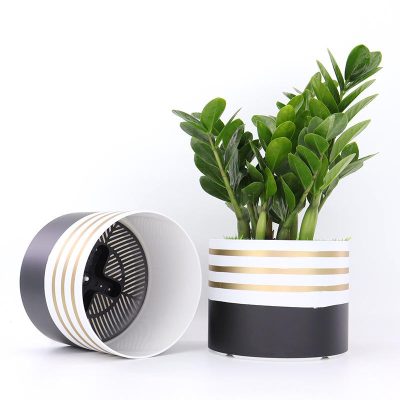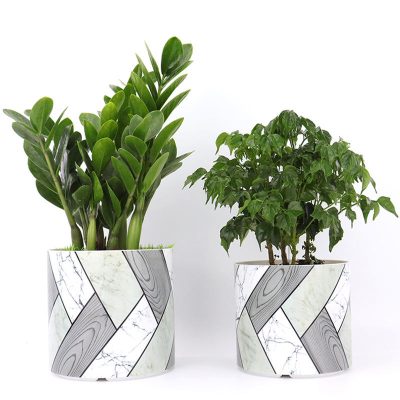Effective watering and proper drainage are crucial for plant health when using plastic pots. Here are some tips to ensure you water your plants effectively and promote good drainage:
- Check the Drainage Holes: Ensure that your plastic pots have drainage holes at the bottom. If they don’t, use a drill or a hot nail to create holes. This allows excess water to drain out and prevents waterlogging.
- Use a Well-Draining Potting Mix: Use a high-quality potting mix that provides good drainage. Avoid using garden soil, as it can become compacted in containers and hinder drainage. Look for potting mixes labeled specifically for container gardening or choose a mix that contains ingredients like perlite, vermiculite, or coconut coir, which improve drainage.
- Water Thoroughly: When watering your plants, water thoroughly until you see water coming out of the drainage holes. This ensures that the entire root ball is properly moistened. Shallow and frequent watering can lead to shallow root growth and a less resilient plant.
- Avoid Overwatering: Allow the top inch or two of the potting mix to dry out before watering again. Stick your finger into the soil to check its moisture level. If it feels dry at that depth, it’s time to water. Overwatering can lead to root rot and other moisture-related issues.
- Consider the Plant’s Watering Needs: Different plants have varying watering requirements. Some plants prefer consistently moist soil, while others prefer drying out between waterings. Research the specific watering needs of your plants and adjust your watering routine accordingly.
- Adjust Watering Frequency: Factors such as temperature, humidity, and pot size can influence the watering frequency. During hot weather, plants may need more frequent watering, while in cooler conditions, they may require less water. Monitor the moisture level of the potting mix and adjust your watering schedule accordingly.
- Water at the Right Time: Watering in the morning is generally recommended, as it allows foliage and soil to dry out during the day. Watering in the evening can leave the plants susceptible to fungal diseases due to prolonged moisture on the leaves.
- Use a Watering Can or a Hose Nozzle: When watering, use a watering can or a hose nozzle with a gentle flow to avoid disturbing the soil or displacing the potting mix. Direct the water to the base of the plant to avoid wetting the foliage excessively.
- Mulch the Surface: Apply a layer of organic mulch, such as wood chips or straw, on the surface of the potting mix. Mulch helps retain moisture, reduces evaporation, and moderates soil temperature. It also prevents the potting mix from drying out too quickly.
- Monitor Drainage: After watering, observe how quickly the water drains through the pot’s drainage holes. If the water drains too slowly, it may indicate a drainage issue, and you may need to adjust the potting mix or the size of the drainage holes.
Remember, every plant and growing environment is unique, so it’s essential to observe and understand the specific watering needs of your plants. Regularly monitor the moisture level, make adjustments as needed, and pay attention to the plant’s response. With proper watering and drainage, you can help ensure healthy and thriving plants in your plastic pots.








